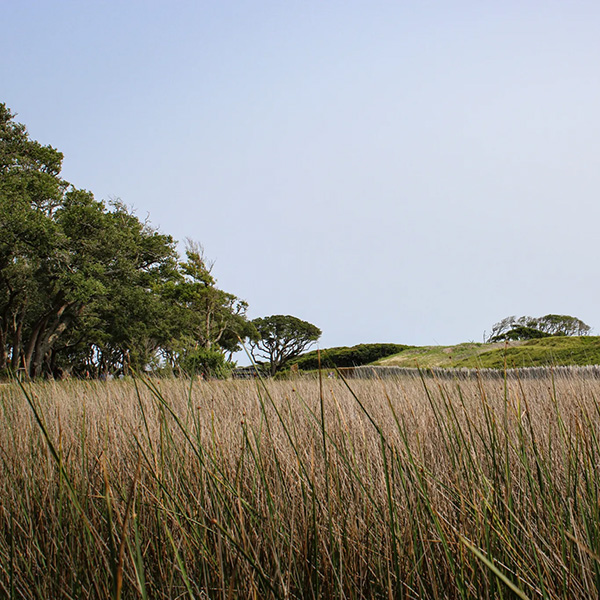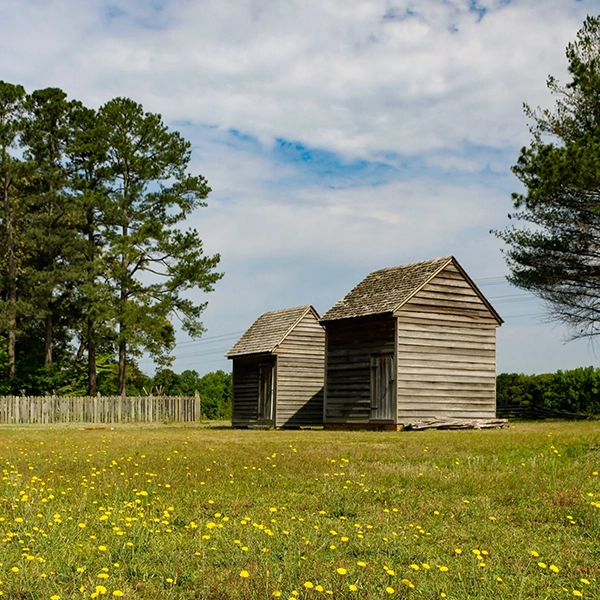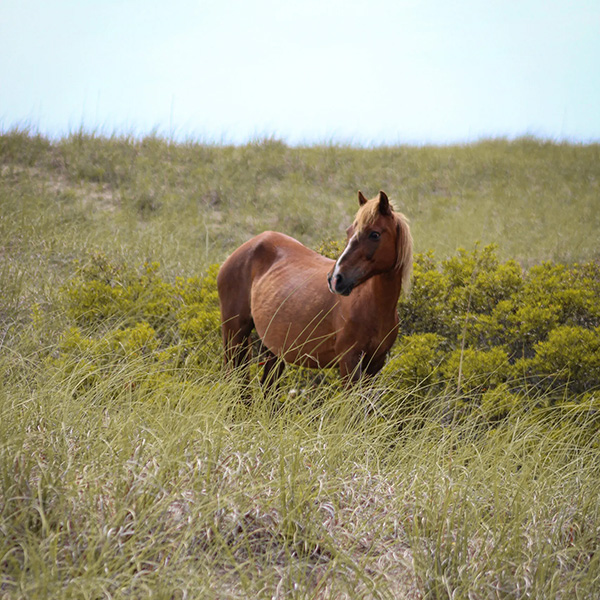
One of our favorite places to slip away to in the fall is Morrow Mountain State Park. It’s close enough to home that we can get there without much fuss, but once you’re in the park, it feels like another world. Deer are everywhere, and tucked among the trees is one of my favorite historic homesteads in the whole state: Attaway Hill.
Now, you might be scratching your head—Attaway Hill? At Morrow Mountain? Believe me, it’s there. If you’ve ever strolled the park grounds, chances are you’ve already set foot on it. You just know it by a different name: the Dr. Kron House.
I hadn’t heard of Attaway Hill—or Dr. Francis Joseph Kron—until about ten years ago, when we took our first family trip to Morrow Mountain. But it only took one visit for me to fall in love with the place. I mean, come on—a simple little cabin perched on a hill, a greenhouse tucked nearby, outbuildings scattered across the yard? That’s my idea of perfection.

The original structures were torn down in the 1950s, but replicas were built a decade later to give visitors a glimpse of what Attaway Hill once looked like. And while the buildings themselves may not be original, the spirit of the homestead feels untouched. There’s a quiet peace to the place—like Dr. Kron himself is still lingering there, keeping gentle watch over the land he loved.
Dr. Francis Joseph Kron
Kron’s story is as fascinating as the homestead itself. He was born in 1798 in Trier, Prussia, right in the middle of the Napoleonic era. At just fifteen, he set out alone for Paris. Can you imagine that? A teenager, landing in one of the most vibrant cities in the world, soaking up university lectures and falling in love with plants—a passion that stayed with him forever.
After a decade in France, he married Mary Catherine Delamothe, and the two of them boarded a ship for America. They first landed in New York, where Kron called himself a “professor of languages.” Eventually, though, Mary’s wealthy uncle in North Carolina extended an invitation, and that’s how their Southern chapter began.
By 1824, Kron was teaching French at UNC Chapel Hill, but teaching wasn’t enough for him. With his uncle-in-law’s support, he went on to the University of Pennsylvania to study medicine, then returned to North Carolina as a doctor. In those days, in a rural community with almost no medical care, you can only imagine what a difference that made.
After a falling out with Mary’s family in 1834, he bought 294 acres in Stanly County and built Attaway Hill. That little homestead eventually grew to more than 7,000 acres—and today, parts of it live on inside Morrow Mountain State Park.

His medical practice was humble but lifesaving. His office served as exam room, pharmacy, and infirmary all in one. He rode across the rugged countryside on his white horse, Hall, making house calls to families who had no one else to turn to.
For two dollars, he’d treat fevers, deliver babies, pull teeth, or even perform amputations. For a quarter, you could buy a laxative. His remedies might sound strange now—turpentine mixed with brown sugar, for instance—but they were what people had, and his presence alone brought hope to families who had gone without.
Sometimes I wonder if he treated any of my own ancestors. My grandaddy’s family came from the Uwharries, among the earliest Quaker settlers in the area. Could it be that I’m here today because Dr. Kron saved someone in my family? It’s entirely possible.
That possibility makes Dr. Kron’s story feel more tangible—more alive, more personal.
But he wasn’t just a physician. He was an experimenter at heart. At Attaway Hill, he grafted fruit trees, planted vineyards, tested out vegetables no one else in the region dared to try, and even built a greenhouse—a rare sight in those days. His farm was a living laboratory, and he gladly shared his knowledge with anyone willing to learn.
Kron and Mary raised daughters, but none married, and after their deaths, the estate became tangled in disputes. Kron tried to leave Attaway Hill to a caretaker’s widow, but the paperwork wasn’t properly signed, so the property passed to distant relatives in Germany. And local lore whispers of treasure he supposedly buried on the land, guarded by ghosts—though no one’s ever found it.
When I walk through today, it doesn’t feel like a museum—it feels alive. It’s easy to picture Kron mixing remedies on a wooden table or tending his plants in the greenhouse.
That’s the pull of Attaway Hill—it’s not just a dot on the map, it’s a piece of history that still breathes. When you walk the grounds, it’s easy to imagine Dr. Kron tending his orchard or climbing up on Hall for a late-night call. The whole place hums with his story, from the greenhouse to the outbuildings scattered around the yard.
Morrow Mountain has its own quiet beauty, but Attaway Hill is what lingers. A simple cabin, a doctor’s legacy, and the reminder that one day, we’ll all leave our own mark on the ground we call home.

















I haven’t been to Murrow Mountain since I kid. We once camped there a few days with my Uncle who had a ski boat and spent the days on lake. It was my first time waterskiing and I wasn’t very good, but I did get up on skis. We often passed the Uwharries on the way to the mountains and I always thought they were a teaser of what was ahead.